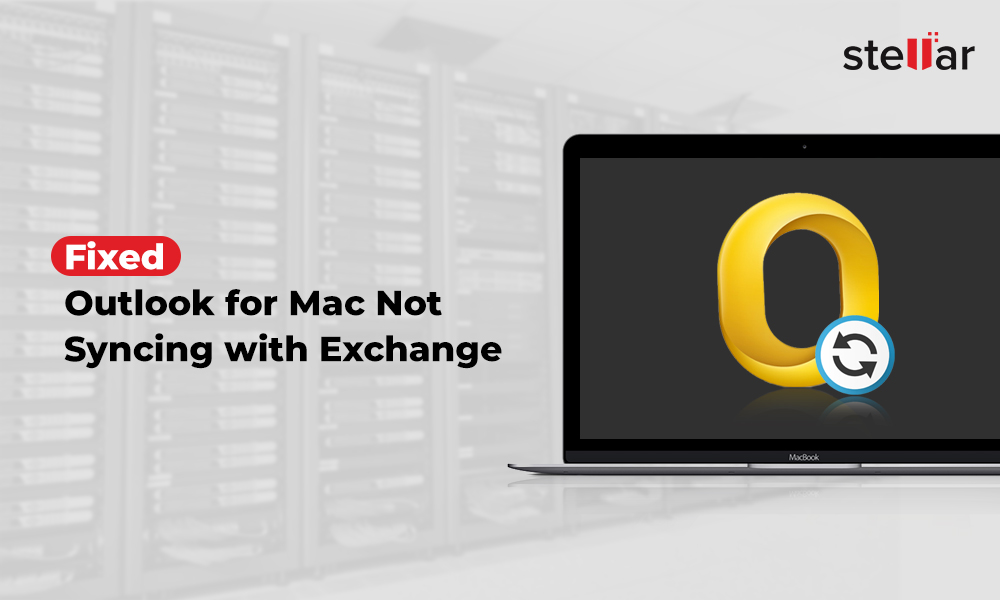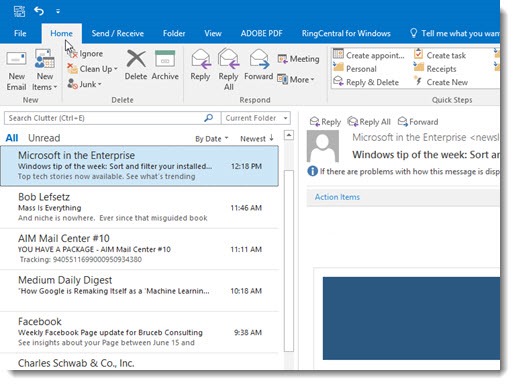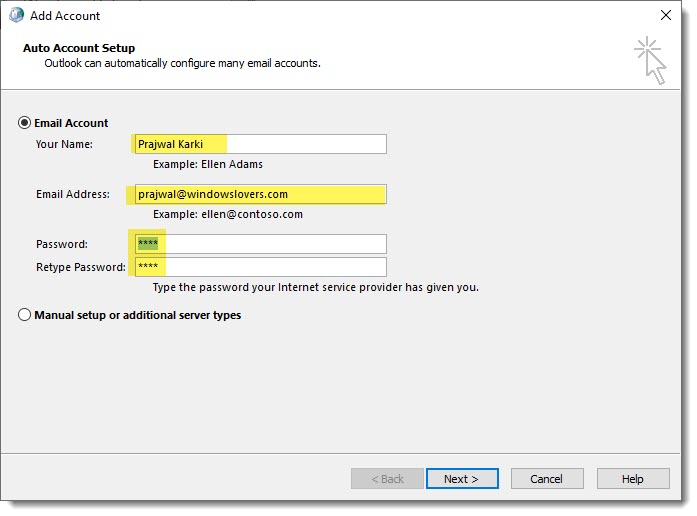-->
- Outlook 2016 Mac Work Offline
- Outlook For Mac 2016 Work Offline Version
- Outlook For Mac 2016 Work Offline Software
Outlook 2016 Mac Work Offline
Note: The above two methods only work with Outlook 2013/2010. 4 Build A New Profile in Outlook 2010/2013/2016. If your Outlook starts Offline, building a new profile in Outlook 2010/2013/2016 may fix this. Just follow the steps below for Outlook 2010/2013/2016. Step 1: Click on the start menu, search for “Control Panel”. Course details Get tips, tricks, and keyboard shortcuts to improve your efficiency with Outlook for Mac 2016. In this course, Gini von Courter shares over 100 power shortcuts to help you save time.
Applies to:Office for Mac, Office 2019 for Mac
There are two basic ways that you, as an admin, can deploy Office for Mac to users in your organization:
Provide your users with the installer package file, and have them install Office for Mac for themselves
Download the installer package file to your local network, and then use your software distribution tools to deploy Office for Mac to your users
If you have an Office 365 (or Microsoft 365) plan, you can provide your users with instructions on how to download and install Office for Mac for themselves. To install Office for Mac, a user has to be administrator on the Mac or know an administrator account name and password.
But, if you deploy Office for Mac for your users, you have more control over the deployment, including which users get Office for Mac and when. To plan your deployment, review the following information.
Download Office for Mac to your local network
The easiest way to download Office for Mac, and ensure you're always getting the most current version and build, is to download directly from the Office Content Delivery Network (CDN) on the internet. Here are the links to the installer packages for the Office suite, which contains all the applications:
- Office for Mac (for Office 365 or Microsoft 365 plans)
- Office 2019 for Mac (for retail or volume licensed versions)
Important
Support for Office 2016 for Mac ended on October 13, 2020. For more information, see End of support for Office 2016 for Mac.
Here is some additional information about installer packages:
- Installer and update packages for individual applications are also available on the Office CDN. For links to those packages, see Most current packages for Office for Mac.
- The same installer package is used for Office for Mac and Office 2019 for Mac. How you activate the product determines whether you get the features for Office for Mac or the features for Office 2019 for Mac.
- Unlike Office 2016 for Mac, the installer package for Office 2019 for Mac isn't available on the Volume Licensing Service Center (VLSC).
Deploy Office for Mac to users in your organization
Office for Mac uses the Apple Installer technology for installation. That means you can use the software distribution tools that you normally use to deploy software to Mac users. Some of the most common tools are Jamf Pro, Munki, and AutoPkg. You can also use Apple Remote Desktop and AppleScript.
Important
There are changes in Office for Mac to improve security, including implementing Apple app sandboxing guidelines. These changes mean that you can't customize the app bundle before or after you deploy Office. Don't add, change, or remove files in an app bundle. For example, even if you don't need the French language resource files for Excel, don't delete them. This change prevents Excel from starting. Even though you can't customize app bundles, you can configure preferences for each app.
Additional deployment information for Office for Mac
Whichever deployment method you decide to use, the following information can help you plan your Office for Mac deployment.
What's new: Before you deploy, review the information about what's new for admins in Office for Mac. This article includes information about system requirements, language support, and new features.
Side-by-side installation: You can't have Office 2016 for Mac, which is no longer supported, and Office 2019 for Mac installed on the same computer. Also, you can't have Office for Mac (from an Office 365 or Microsoft 365 plan) along with either Office 2016 for Mac or Office 2019 for Mac (both of which are one-time purchase versions) installed on the same computer.
Deploying individual apps: Installer package files for individual applications are available on the Office Content Delivery Network (CDN). For links to those files, see Most current packages for Office for Mac.
Activation: To use Office for Mac, it needs to be activated. Before you deploy, review the information about how activation works in Office for Mac.
Uninstalling: If you need to uninstall Office for Mac, you can follow these steps to completely remove Office for Mac. Unfortunately, there is no program to uninstall Office for Mac automatically.
Version numbers Version numbers of 16.17 or higher for retail or volume licensed installs indicate you have Office 2019 for Mac. Office 2016 for Mac, which is no longer supported, had version numbers of 16.16 or lower. Since the 'major' version (16) hasn't changed between Office 2016 for Mac and Office 2019 for Mac, application settings, including policies, preferences, and preference domains are similar between the two versions. Also, add-ins and other extensibility solutions that were compatible with Office 2016 for Mac will most likely be compatible with Office 2019 for Mac or will require minimal testing.
Upgrade to Office for Mac or to Office 2019 for Mac
Upgrade to Office for Mac (subscription version): If you're a volume licensed customer of Office 2016 for Mac or Office 2019 for Mac, you can upgrade to Office for Mac (available with certain Office 365 or Microsoft 365 plans) without uninstalling your current version. First, download and run the license removal tool. Second, launch Microsoft AutoUpdate (MAU) and install the latest Office updates. Finally, launch any Office app and sign in with your Office 365 or Microsoft 365 account. For a demo of these steps, and an example of how to automate this process with Jamf Pro, watch this video.
Upgrade to Office 2019 for Mac: If you're a volume licensed customer, you can upgrade to Office 2019 for Mac without uninstalling Office 2016 for Mac. First, you need to download the 2019 version of the Volume License (VL) Serializer from the Volume Licensing Service Center (VLSC). Second, download the latest version of Office 2019 for Mac. Then, deploy both the Volume License (VL) Serializer and Office 2019 for Mac to each device running Office 2016 for Mac. There is no need to remove Office 2016 for Mac first.
Related articles
How to Fix Outlook Working Offline Issue in Outlook 2019?
admin ❘ September 2nd, 2020

If you are one of them who are facing “Outlook working Offline issue”, then this is the right place for you. Here, we will consecutively define the ways regarding ‘Outlook working offline problem‘ effortlessly. When users try accessing Microsoft Outlook, they may face an error that can disable both incoming and outgoing messages. This can be frustrating, especially when users wish to forward or receive crucial information.
Before moving on to the methods, delete the Outlook account or uninstall the downloaded Outlook application. Prior to solving the issue, the user must verify whether he/she has an active network connection or not. Furthermore, if Outlook is disconnected from the Exchange Server. Then, this may also cause an individual a problem in sending and receiving messages out front. Therefore, we will dictate step-by-step instructions to repair Outlook by showing working offline in a profound manner.
Now, we will focus on ways on how to resolve the offline issue using a manual approach.
DIY Methods to Disable Outlook Stuck in Offline Mode:
Follow the given- below steps can help an individual to fix ‘Outlook working offline issue’. Now, take a look at the below- given method to repair the issue.
Repair: Outlook Work Offline Greyed Out
The below-given methods will help you to resolve ‘Outlook is showing Working Offline’ inconsistency effortlessly. Follow the instructions properly to avoid further issues.
Step 1: Launch Microsoft Outlook


- First, redirect to the Start Menu. Tap the Start button on the left-hand side corner of the Window to access it.
- Secondly, you have to select Microsoft Office from the drop-down menu.
- Thirdly, pick “All Programs” from the Start button and then one can observe the MS Office folder.
- Lastly, tap “Microsoft Outlook” within the folder. It will then open the Outlook application on your local PC.

Step 2: How do I turn off work Offline in Outlook 2010?
- First, hit the Send/Receive option from the menu in Outlook wizard.
- Secondly, you can turn off the Work Offline setting in Outlook. When MS Outlook detaches from the Exchange Server. Then, users can view that “Work Offline” with a red “X” mark appears on it. Tap this option to disable the Work Offline settings to fix ‘Outlook is showing working offline’ issue.
- Thirdly, after the users tap the button, the “X” mark will disappear. Then, verify that Work Offline is now being turned off.
- Remember that one can only encounter this icon on the Send/Receive tab if MS Outlook is offline.
- Lastly, ensure you have an active network bandwidth. Users can forward a sample mail to their email id or other recipients to confirm. Only if MS Outlook is currently active and begins working again.
Outlook For Mac 2016 Work Offline Version
In case, the manual method increases the corruption level in Outlook data file(.pst). Then, redirect to the best automated utility to repair PST files.

How to Turn off Outlook Stuck in Offline Mode issue Professionally?
Using the above manual approach itself can intrude the Outlook profile with some corruption in the Outlook profile. The working offline issue may generate due to the Outlook data file(.pst). Therefore, you must try using OutlookPST Recovery to avoid corruption using the dual-mode recovery feature. The feature fixes PST files according to the level of corruption.
Summing It Up:
Above, we have stated the ways regarding ‘Outlook working Offline issue’. It is often noticed that manual ways hardly give out the desired outcome. Solving an Outlook issue can be tricky, as the application is connected to the Exchange Server directly. A single mistake can highly corrupt the file or eventually result in data loss. Moreover, if the manual approach does put you in a frustrating state because of inconsistency issues in PST files. Then, you can try utilizing a professional approach to repair Outlook data files.
Outlook For Mac 2016 Work Offline Software
Realted Post